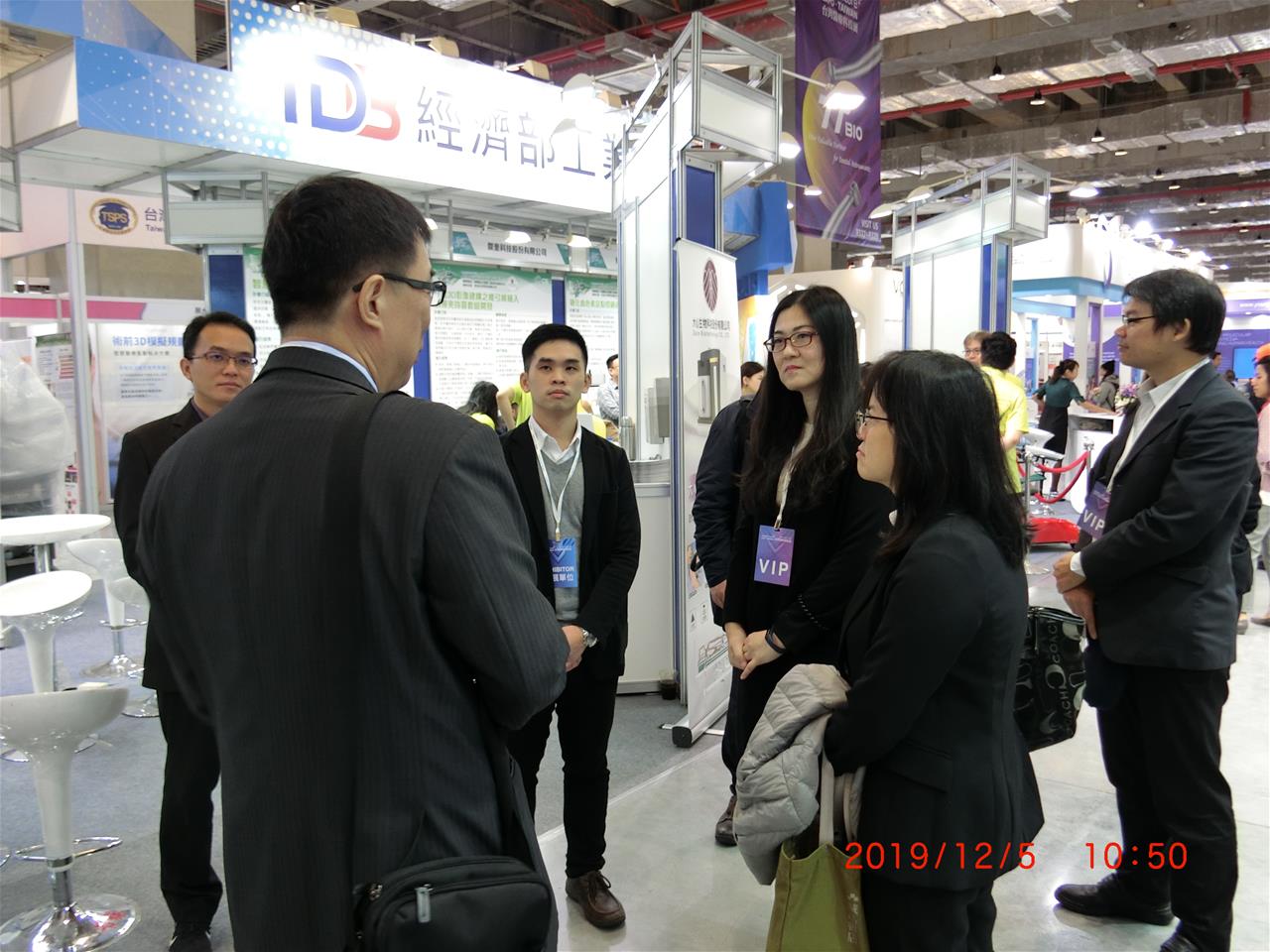
To enhance Taiwan’s competitiveness in the smart medical device and assistive device industries, the Industrial Development Bureau (IDB), Ministry of Economic Affairs commissioned the Metal Industries Research & Development Centre (MIRDC) to hold the “2019 Result Presentation of the Promotion and Guidance for Smart Medical Device and Assistive Device Industries” on December 5-8, 2019. MIRDC started to implement IDB’s “Guidance and Internationalization Promotion Program for Niche Biotech and Pharmaceutical Industries” since 2017. This year marks the third year of implementation of the program and also the 50th anniversary of IDB. The program has successfully promoted Taiwan’s smart medical device and assistive technology industries. By advancing the technology, augmenting the law and regulations, training interdisciplinary talents, constructing clinical field, carrying out international promotion, etc., the value added to Taiwan’s medical devices and products is increased.
The National Development Council’s survey report indicated that senior population (aged 65 or above) in Taiwan has exceeded 14% in 2018, and it will become a super-aged society (with senior population exceeding 20%) in 2026. The ageing speed is much higher than that of Japan. It is estimated the senior population proportion will exceed 40% in 2065, by then every 1.2 producer in Taiwan will need to support one senior citizen. As the senior population grows, the demands for relevant assistive devices will increase considering the deteriorating physical, mobility, and visual/hearing functions of the senior citizens. “Mature-age business opportunities” will become a trend. The BMI Research survey and statistics indicated that the global economic scale of medical devices may grow up to US$ 425.3 billion in 2020, and the market of smart healthcare industry will develop towards the predictive, preventive, proactive, and bilateral directions in the future.
Dr. Chih-Lung Lin, Vice President of MIRDC, talked about the government’s efforts in the development of healthcare technology and product development in his speech and through the presentation of 8 development outcomes. These include the POCT HbA1c system by iXensor, the pedicle implanted clamp set for 3D spine imaging creation by JO Corporation, the smart thyroid nodule auto-identification system by AmCad BioMed, the critical technology for 3DP customized porous acetabular cup by Ingrowth Biotech, the automatic excretion cleaning device for bed-ridden patients by Daxin Biotechnology, the muscle strength rehabilitation sensing device by CoolSo, the transferring tool with smart field sensor by Magtonic, and the mobile screening software and wearable module applicable to adhesive capsulitis by Compal. Also, clinical fields are developed in collaboration with the Tri-Service General Hospital and the E-Da Cancer Hospital, focusing on “autoimmune deficiency” and “chronic obstructive pulmonary disease”, where the smart medical devices and assistive devices can be put into practical applications, achieving the goal of interdisciplinary cooperation by the industry, official, academic and research sectors.